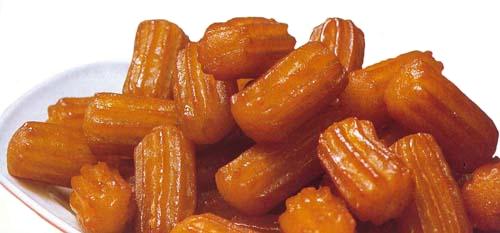Facts About Tulumba
Tulumba, sometimes known as Bamiyeh, is a delightful deep-fried dessert originating from the rich culinary traditions of the Ottoman Empire and the Levant. This sugary treat is crafted from unleavened dough, which is shaped into small, ridged ovals, deep-fried to a golden brown, and then soaked in a luscious sugar syrup. If you enjoy jalebis or churros, you'll likely savor tulumba as well!
Traditionally served cold, tulumba is a favorite during special occasions like Chanukah among Turkish, Israeli, and Persian Jews. The name "Tulumba" comes from the Turkish word for "pump." It is called "pomba" in Cypriot Greek and "bombacık" in Cypriot Turkish. In Armenian cuisine, it is referred to as "pomp" or "tulumba." You can find this delightful dessert in the kitchens of Albania, Bosnia, Bulgaria, North Macedonia, Greece, Serbia, Azerbaijan, and Turkey. In Persian cuisine, it's known as "bamiyeh" while in various Arabic-speaking regions, it goes by names like "ṭurumba" "balah ash-sham" or "datli."
The key ingredients for making tulumba are a yogurt and starch-based dough, which is deep-fried and then immersed in syrup. It's particularly popular during Iftar in Ramadan, providing a sweet conclusion to the day's fast. Tulumba is often enjoyed alongside zulbiā, another syrup-soaked dessert, but with a distinctive web-like design made from strips of dough.
So next time you're in the mood for something sweet and exotic, give tulumba a try!

 Russia
Russia